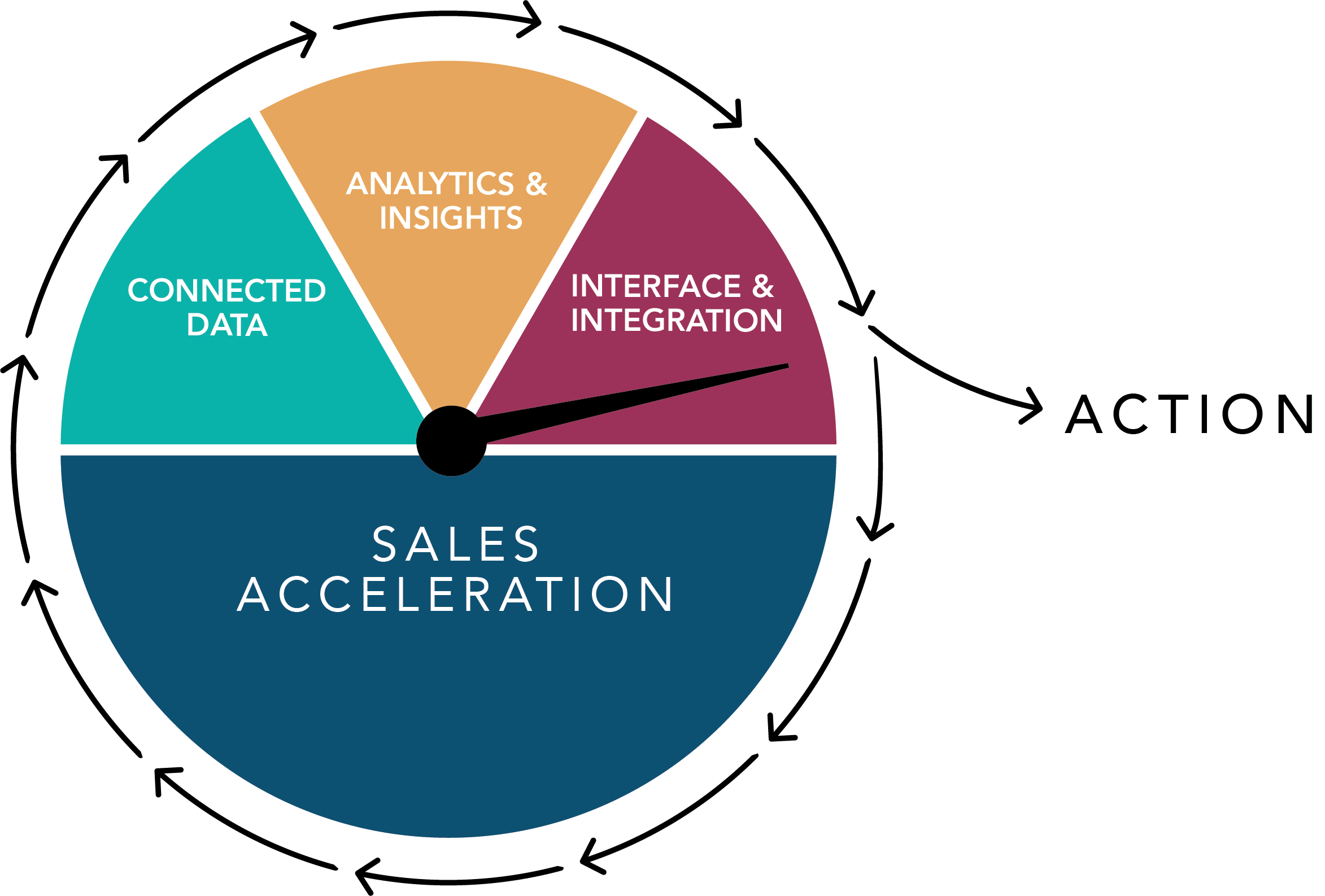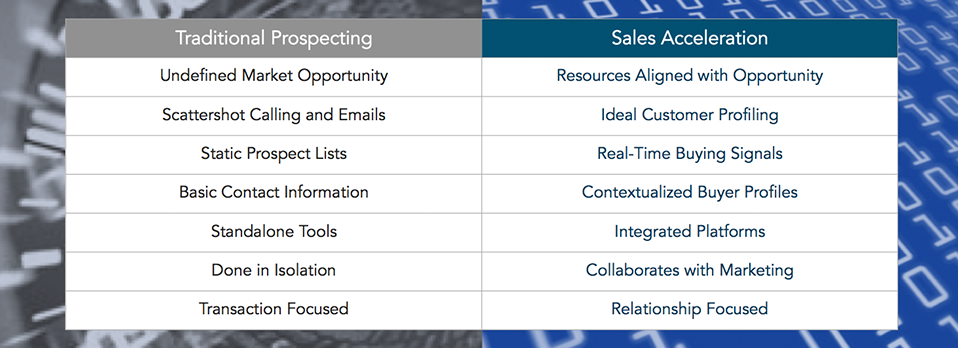3 Steps to Create a Quicker Path from Prospect to Customer
ABC: Always Be Closing.
It’s one of the most notorious lines from the movie Glengarry Glen Ross, a taut Hollywood classic about a group of ruthless real estate salesmen. In one of the film’s most powerful scenes, a motivational sales trainer played by Alec Baldwin delivers an angry, verbally abusive speech to persuade the team to close more business. After repeatedly hurling insults, he tells them, “We’re adding a little something to this month's sales contest. As you all know first prize is a Cadillac El Dorado. Anyone wanna see second prize? Second prize is a set of steak knives. Third prize is you're fired. Get the picture?”
While this type of “motivational” speech is not exactly how I prefer to inspire my team, it does offer a glimpse into the aggressive attitude and relentless mentality historically needed to accelerate sales in the pre-digital days. Fortunately for most sales professionals, the requirements demanded by Baldwin’s character are completely removed from the reality of today’s modern-day sales culture. While persistent cold-calling, ruthless aggression, and the 3-martini lunch may have been enough to close a deal in the past, today, having real-time access to the right data and analytics, deriving meaningful insights from it, and actioning on it is the key to creating a faster path from potential prospect to profitable customer. Buyers make purchase decisions in fundamentally different ways today, and sales needs to adapt accordingly. Your customers spend most of the sales cycle in digital, doing their own research before even thinking about speaking to anyone in sales. And with so much data on their buying behaviors, it can be vital in helping guide them to the point of sale based on what they want to buy and when THEY are ready, not when the sales person is.
While the desire to speed up the sales process has always been a priority, the way in which technology and data have come together to help truly accelerate business is the real game changer.
We’re all too familiar with the challenge of engaging potential buyers in today’s complex and noisy B2B environment. Even our best prospects are delaying interaction with sales and are often unresponsive to traditional marketing tactics. This has forced relevant, timely and holistic data to guide interactions and touches. The ability to understand everything about a potential buyer – their needs, their challenges, and their industry – has provided the insight to help sales and marketing more effectively connect with prospects. Many would classify this as sales intelligence, and it has led to popular disciplines like Account-Based Marketing to better align with the B2B customer journey.
But sales acceleration goes beyond sales intelligence. It’s actually the output achieved from gathering data and insights and deploying the latter intelligently, in real-time, across systems and teams in ways that the right people get the insight, understand it, and action on it at exactly the perfect moment that really drives sales acceleration.

I think about sales acceleration in three steps. First there’s the data. It’s vital to have data that is organized, structured, and integrated across the enterprise. In other words, the data must be mastered so the information driving your key business decisions is accurate and fresh. And there should be a lot of data. Think about all the first-party data that you generate, whether it's through your website or through the support systems or your CRM platform. Plus, there’s third-party data you’ll want to enrich and complete your first-party data. This is the foundation for engaging your prospects with the right context.
Unstructured data can also play a vital role. Think about industry news, PR, content, and social data. For example, let’s say you notice your prospect is creating some buzz with investment news, you notice that they are also increasing their investments through your third-party data, you see them looking at certain products on your website, and you encounter a stream of editorial coverage and PR announcements around this. These are often some of the best signals that there's an amazing opportunity to connect with a potential customer, especially when that data is coupled with your first- and third-party “real-time” data.
Your integrated set of first- and third-party data, both structured and unstructured, is your biggest, proprietary differentiator. This data and its actual usability creates a real competitive advantage.
The next step is deriving insights that can be pulled from all of this data. This is where analytics plays a vital role. Whether you have an internal or external analytics team, or some combination of both, this is the stage where you start to identify the meaning of the data and define the actions your team should be taking.
You can tie all of these unique data points together and use the insights to set off a trigger for the sales person to call at that exact right moment with the exact right context to take the sale to the next level. No Glengarry Glen Ross tactics needed!
The emergence of cloud-based technology has made this type of instant analysis a reality for many organizations. The sheer quantity of data that can be analyzed and processed in the cloud in real-time and immediately distributed in applications, is transforming the way sales is being managed. It’s a much more modern view of how to accelerate sales versus the old, static methods of outbound calling and prospecting.
The final step is ensuring your team is setup to effectively operationalize the data and intelligence. This is where user experience really matters. It's all about improving the experience of the salesperson by seamlessly supplying the right data and insights within their daily workflows, such as their CRM, so they can easily act on the information. Ultimately, it’s about being much more prescriptive in highlighting opportunities and stressing what’s changed, the accounts that should be prioritized, and most importantly, how to engage this audience.

By combining all of these steps, you’re essentially eliminating the guesswork that has been so predominant in sales for so long. With more data and insights guiding your approach, you’ll understand the right time to make a sale in the fastest way possible. Plus, you’ll be able to cultivate that customer for years to come, because great sales and marketing is no longer primarily about closing a single deal. It’s about building and growing the most valuable business relationships. Sales acceleration represents less of a race and more of a carefully plotted marathon to sustainable growth.
So, it is no longer ABC, but ABA: Always Be Analyzing.

